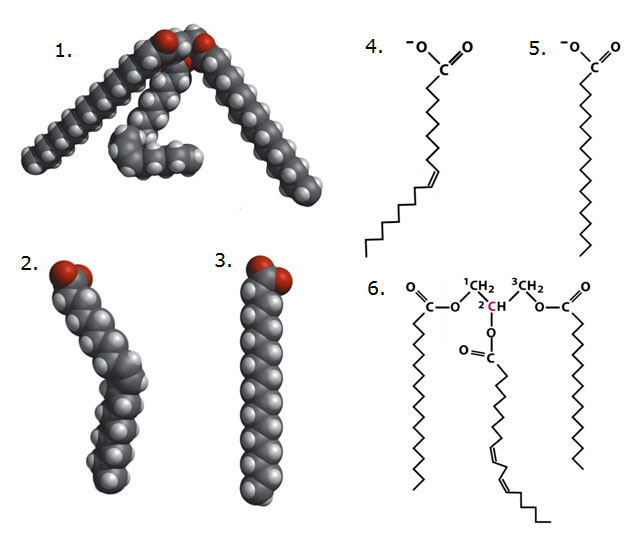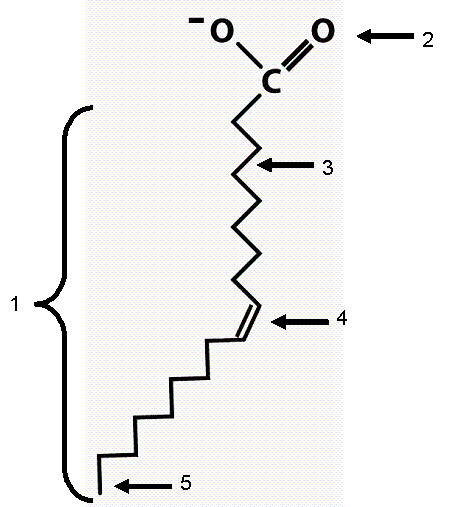Multiple Choice
Identify the choice that best completes the
statement or answers the question.
|
|
|
1.
|
Lynn Margulis and other biologists believe that
a. | the mitochondrial DNA code was a parallel but more ancient code than nuclear
DNA. | b. | mitochondria were at one time separate, free-living organisms similar to bacteria,
rather than organelles. | c. | mitochondria were obligate symbionts, with both
the mitochondrion and the cell it inhabited benefiting from the relationship. | d. | all of
these | e. | none of these |
|
|
|
2.
|
The vast majority of people afflicted with recessive disorders are born to
parents who were
a. | not affected at all by the disease. | b. | subjected to some environmental toxin that
caused the disease in their children. | c. | slightly affected by the disease, showing some
but not all of the symptoms. | d. | both affected by the
disease. | e. | None of the choices are correct. |
|
|
|
3.
|
Genes located close together on the same chromosomes are referred to as
__________ genes and generally __________.
a. | linked . . . do not sort independently during meiosis | b. | associated . . .
sort independently during meiosis | c. | homologous . . . are inherited
together | d. | linked . . . sort independently during meiosis | e. | codependent . . . do
not sort independently during meiosis |
|
|
|
4.
|
Linked genes generally
a. | follow the laws of independent assortment. | b. | show incomplete
dominance. | c. | show pleiotropy. | d. | reflect a pattern of
codominance. | e. | do not follow the laws of independent assortment. |
|
|
|
5.
|
Any gene located on a sex chromosome
a. | will exhibit pleiotropy. | b. | is called a sex-linked
gene. | c. | will exhibit codominance. | d. | is called a recessive gene. | e. | is called a dominant
allele. |
|
|
|
6.
|
Why are sex-linked conditions more common in men than in women?
a. | Women simply do not develop the disease regardless of their genetic
composition. | b. | The sex chromosomes are more active in men than in women. | c. | Men acquire two
copies of the defective gene during fertilization. | d. | Men need to inherit only one copy of the
recessive allele for the condition to be fully expressed. | e. | None of the choices
are correct. |
|
|
|
7.
|
Which one of the following is false?
a. | One RNA molecule can include four different nucleotides in its
structure. | b. | RNA is a nucleic acid. | c. | RNA uses the sugar
dextrose. | d. | RNA uses the nitrogenous base uracil. | e. | RNA molecules have a sugar-phosphate
backbone. |
|
|
|
8.
|
Which one of the following is false?
a. | DNA molecules have a sugar-phosphate backbone. | b. | DNA uses the sugar
deoxyribose. | c. | DNA uses the nitrogenous base uracil. | d. | DNA is a nucleic acid. | e. | One DNA molecule can
include four different nucleotides in its structure. |
|
|
|
9.
|
If one strand of DNA is CGGTAC, the corresponding strand would be
a. | GCCTAG. | b. | GCCAUC. | c. | GCCATG. | d. | TAACGT. | e. | CGGTAC. |
|
|
|
10.
|
The copying mechanism of DNA is most like
a. | using a photographic negative to make a positive image. | b. | threading beads onto
a string. | c. | carving a figure out of wood. | d. | joining together links to make a
chain. | e. | mixing flour, sugar, and water to make bread dough. |
|
|
|
11.
|
The directions for each amino acid in a polypeptide are indicated by a codon
that consists of __________ nucleotide(s) in an RNA molecule.
|
|
|
12.
|
If you commit a crime, you need to make sure that you do not leave even the
smallest speck of blood, hair, etc., from your body behind because if you do, the DNA in this
material can be amplified by __________, subjected to genetic analysis, and used to identify you as
the perpetrator of the crime.
a. | blotting | b. | PCR | c. | RFLP | d. | reverse transcriptase | e. | ATP |
|
|
|
13.
|
The polymerase chain reaction relies upon unusual, heat-resistant __________
that were isolated from bacteria living in hot springs.
a. | mRNA | b. | phages | c. | plasmids | d. | restriction enzymes | e. | DNA polymerase
molecules |
|
|
|
14.
|
Which of the following constitutes a basic, modern definition of a sexually
reproducing species?
a. | a group of individuals who resemble each other, on average, more than they resemble
anything else | b. | the smallest unit that can engage in microevolution | c. | a group of
populations whose members can interbreed and produce fertile offspring | d. | a group of
individuals who interbreed | e. | a group of individuals living in the same place
at the same time |
|
|
|
15.
|
A change in the relative frequencies of alleles in the gene pool of a population
is called
a. | diversifying selection. | b. | microevolution. | c. | genetic
drift. | d. | directional selection. | e. | mutation. |
|
|
|
16.
|
In the Hardy-Weinberg equation, homozygous dominant individuals in a population
are represented by
a. |  . . | b. | 2pq. | c. |  . . | d. | q or p. | e. | None of the choices are
correct. |
|
|
|
17.
|
Fitness increases when an organism
a. | lives for a long time. | b. | survives many hardships. | c. | is stronger than the
other organisms in its community. | d. | passes on a greater proportion of its genes to
the next generation. | e. | is
disease-free. |
|
|
|
18.
|
Gel electrophoresis
a. | separates fragments of DNA based on their net charge | b. | separates fragments
of DNA based on their base pair size | c. | separates fragments of DNA based on their net
weight | d. | Both (b) and (c) are correct | e. | All above choices are
correct. |
|
|
|
19.
|
In mitosis, if a parent cell has 16 chromosomes during G1, each daughter cell
will have how many chromosomes?
|
|
|
20.
|
Cells with two sets of genetic information are described by the term
a. | polyploid. | b. | diploid. | c. | triploid. | d. | haploid. | e. | tetraploid. |
|
|
|
21.
|
The distribution of cytoplasm to daughter cells is accomplished during
a. | prokaryotic fission. | b. | mitosis. | c. | meiosis. | d. | cytokinesis (cytoplasmic
division). | e. | karyokinesis. |
|
|
|
Use the diagram to answer the following questions.
|
|
|
22.
|
The flow of genetic information in a cell can be primarily described as
DNA®RNA®Protein. Which of the following combinations represents this
pathway?
a. | 1, 2, 3 | b. | 1, 4, 2 | c. | 2, 5,
3 | d. | 3, 2, 1 | e. | 1, 1, 2 |
|
|
|
Answer the following questions based on the diagram below:
|
|
|
23.
|
Chromatin is found in which stage?
a. | 1 | b. | 2 | c. | 3 | d. | 4 | e. | DNA is diffused into
chromatin in all stages. |
|
|
|
24.
|
Which stage is characterized by the condensing of DNA into chromosomes and the
breakdown of the nuclear membrane?
a. | 1 | b. | 2 | c. | 3 | d. | 4 | e. | None of the
above. |
|
|
|
Answer the following questions based on this graph and images: The
following graph was created using data collected through the “Natural Selection” done in
class. The “beans” used to simulate the prey population are diagramed
below.
|
|
|
25.
|
The y axis (left side) represents which of the following?
a. | The allele frequency of the gene affecting “color”. | b. | The frequency of
each “prey” phenotype. | c. | The number of each “prey” phenotype
left in each generation. | d. | The fitness level of each
phenotype. | e. | The effectiveness of each “predator” group to capture the
“prey”. |
|
|
|
26.
|
Which would be the most appropriate title for this graph (what is the data
actually showing)?
a. | Change in phenotypic frequency in prey population due to natural
selection. | b. | Change in allele frequency in prey population due to natural
selection. | c. | Percentage of each phenotype remaining after each generation. | d. | Survival of the
fittest due to natural selection. | e. | The Bean Lab. |
|
|
|
The following four diagrams show the structures of different molecules.
Answer the following questions based on your ability to identify them.
|
|
|
27.
|
Which diagram represents the monomer units of proteins?
a. | 1. | b. | 2. | c. | 3. | d. | 4. | e. | Both (2) and
(4) |
|
|
|
Using diagrams below answer the following questions. 
|
|
|
28.
|
Which of the above diagrams show an unsaturated fat?
a. | 1, 4, 5, 6 | b. | 2, 3, 1 | c. | 1, 2, 6,
4 | d. | 5, 3, 1 | e. | all of the
above |
|
|
|
Using the diagram answer the following questions. 
|
|
|
29.
|
Which of the following terms best describes this molecule?
a. | fatty acid | b. | saturated fatty acid | c. | polypeptide | d. | phospholipid | e. | triglyceride |
|
|
|
30.
|
Diploid organisms
a. | have corresponding alleles on homologous chromosomes. | b. | are usually the
result of the fusion of two haploid gametes. | c. | have two sets of
chromosomes. | d. | have pairs of homologous chromosomes. | e. | all of these |
|